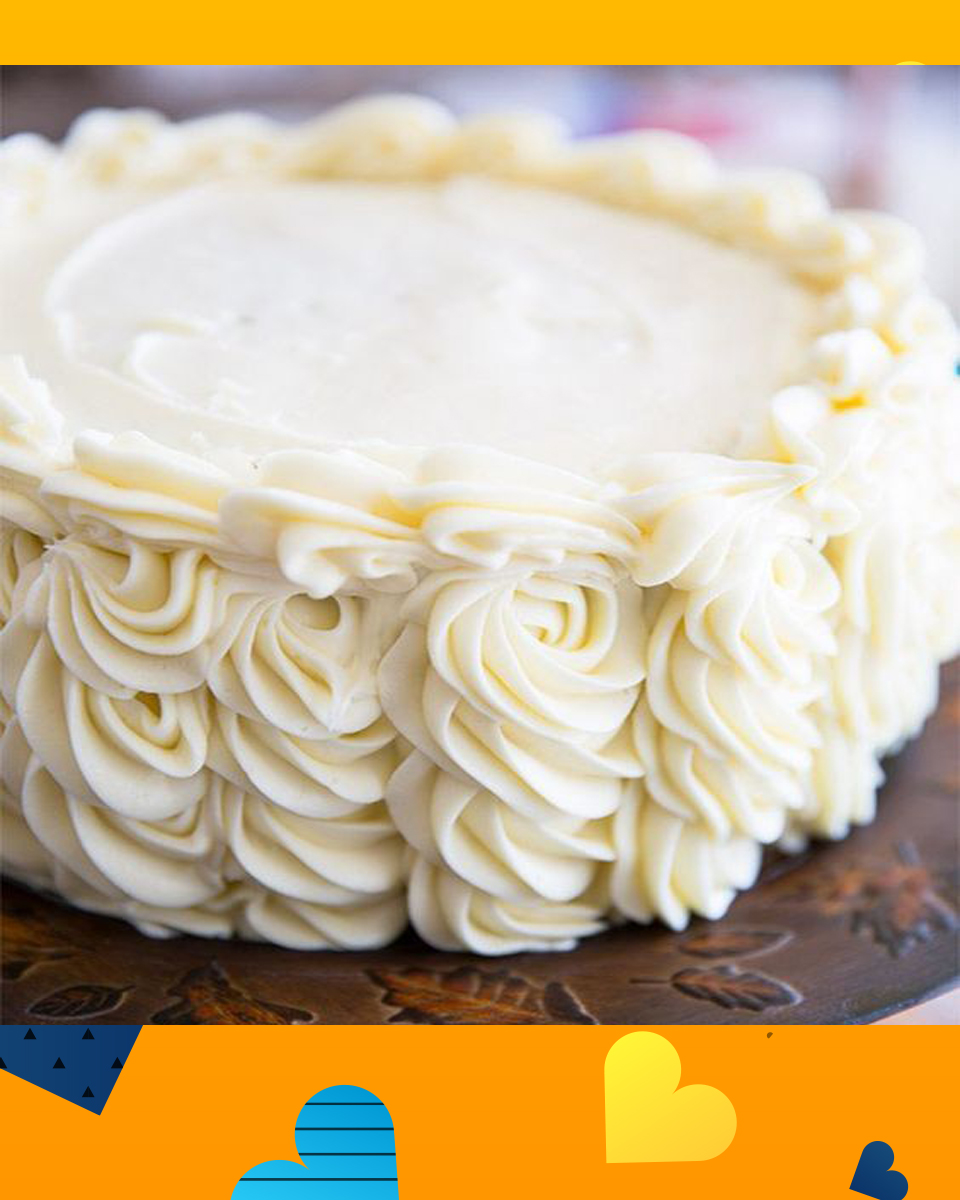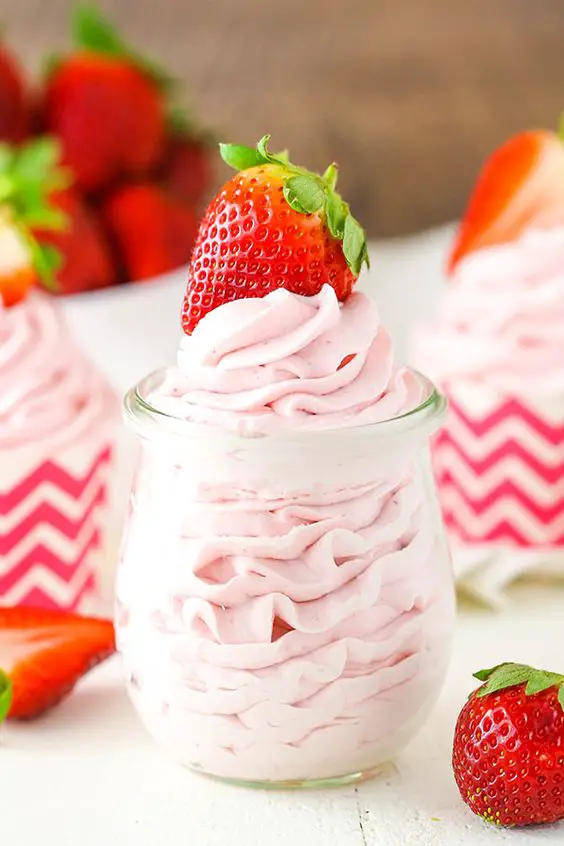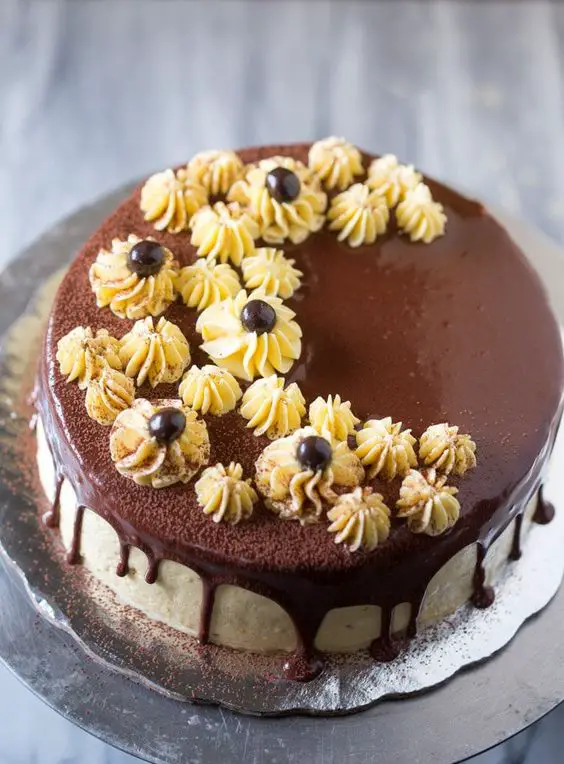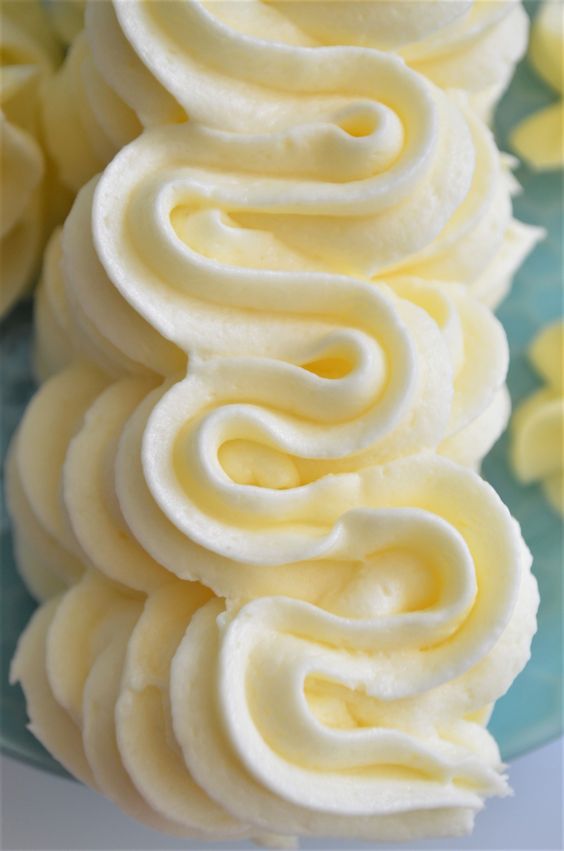Cream cheese frosting is a delectable and versatile confection that has become a beloved staple in the world of baking and dessert-making. Known for its lusciously smooth texture and rich, tangy-sweet flavor, this frosting is a delightful complement to a wide array of baked goods. Its main ingredient, cream cheese, provides a luxurious and creamy base, while the addition of powdered sugar and sometimes a hint of vanilla extract creates a harmonious balance between sweetness and tanginess. Cream cheese frosting is not only a popular choice for adorning cakes and cupcakes, but it also serves as a tempting dip for fruits and a delectable filling for pastries. Its versatility and indulgent taste make it a cherished favorite among both bakers and dessert enthusiasts alike.
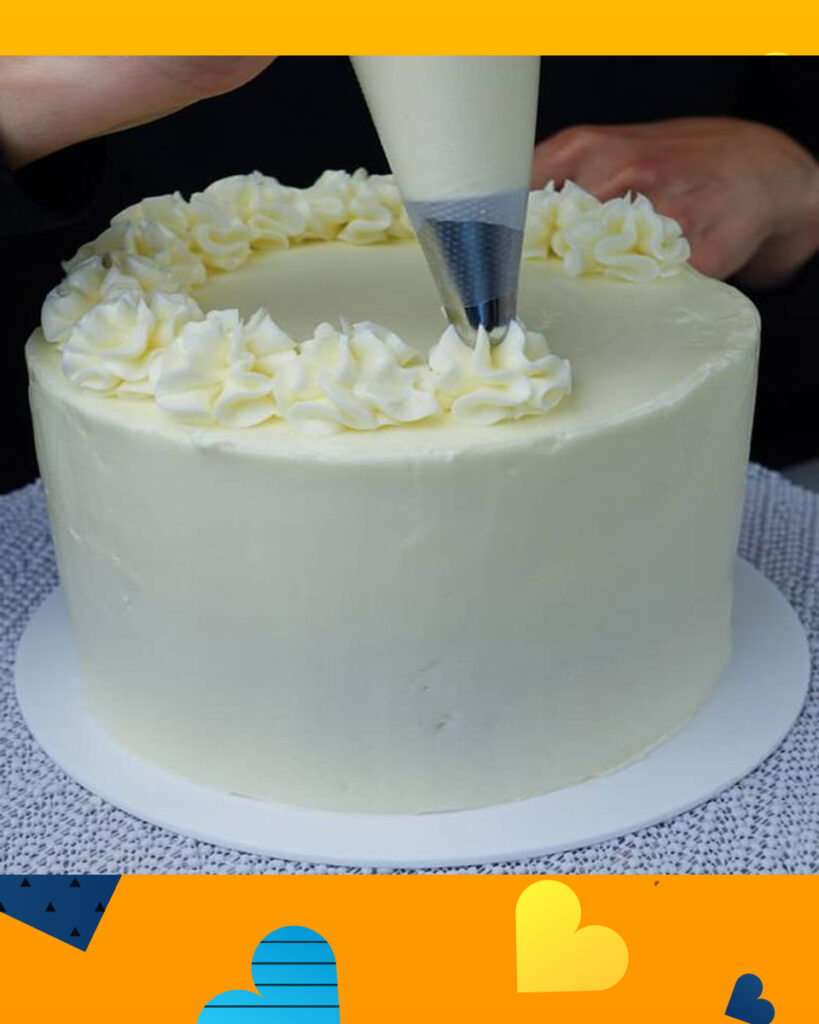
What is Cream Cheese Frosting?
Cream cheese frosting is a smooth and creamy icing made by combining cream cheese, butter, powdered sugar, and often vanilla extract. It is known for its rich and tangy flavor profile that perfectly balances sweetness with a hint of tanginess. Cream cheese frosting is widely used to top cakes, cupcakes, cookies, and other baked goods, adding both flavor and visual appeal to the finished treats. Its velvety texture makes it suitable for spreading, piping, and decorating, and it can be customized with various flavorings and colors to suit different desserts. Cream cheese frosting is a beloved favorite in the world of baking, known for its versatility and its ability to enhance a wide range of desserts.
Why is my cream cheese frosting lumpy?
Cream cheese frosting can become lumpy for a few reasons, but the most common culprits include temperature issues and overmixing. Here’s a breakdown of why this might happen and how to fix it:
- Cold Cream Cheese: If your cream cheese is too cold when you start mixing, it might not blend smoothly with the other ingredients. It’s crucial to ensure that your cream cheese is at room temperature before making the frosting. Let it sit out for about 30 minutes before using it in your recipe.
- Overmixing: Cream cheese frosting should be mixed until just combined and smooth. Overmixing can cause the fats in the cream cheese and butter to separate, leading to a lumpy texture. Once the cream cheese and butter are fully incorporated, avoid excessive mixing.
- Butter Temperature: Just like cream cheese, your butter should also be at room temperature. Cold butter can create lumps in the frosting. Make sure both the butter and cream cheese are equally softened before starting.
- Powdered Sugar Clumps: If your powdered sugar has clumps, these can lead to lumps in the frosting. Sift the powdered sugar before adding it to the cream cheese and butter mixture to ensure a smooth and lump-free frosting.
- Residual Ingredients: Sometimes bits of cream cheese or butter can stick to the sides of the mixing bowl or beaters, leading to uneven mixing. Be sure to scrape down the sides of the bowl and the beaters periodically to ensure all ingredients are fully incorporated.
To fix lumpy cream cheese frosting:
- Room Temperature: Make sure your cream cheese and butter are both at room temperature before mixing. This helps them blend together smoothly.
- Gentle Mixing: Mix the ingredients on low speed until they’re just combined. Overmixing should be avoided.
- Softening Techniques: If your cream cheese is too cold, you can soften it gently in a microwave using short bursts of low heat or by placing the wrapped cream cheese in a sealed plastic bag and immersing it in lukewarm water for a few minutes. Make sure not to melt the cream cheese.
- Sifting: If you notice clumps in your powdered sugar, sift it before adding it to the frosting mixture.
Remember, achieving the right texture might require a bit of trial and error. If your frosting does end up lumpy, you can attempt to salvage it by gently reheating it and re-mixing. If that doesn’t work, adding a small amount of fresh, softened cream cheese and re-mixing might help smooth out the texture.
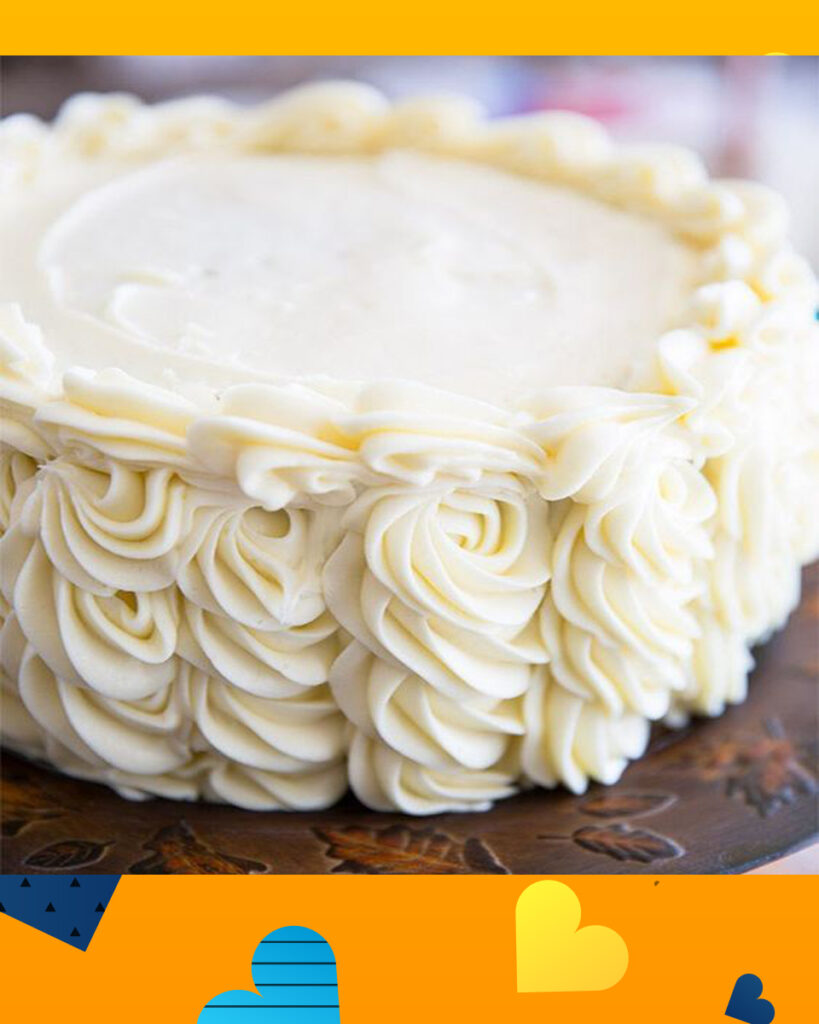
Cream Cheese Frosting Recipe
Ingredients
- 8 oz (225g) cream cheese, softened to room temperature
- 1/2 cup (1 stick or 113g) unsalted butter, softened to room temperature
- 4 cups (480g) powdered sugar, sifted
- 1 teaspoon vanilla extract
Instructions
- Prepare Ingredients:
- Take the cream cheese and butter out of the refrigerator and allow them to come to room temperature. This will ensure smooth mixing and prevent lumps in the frosting.
- Mix Cream Cheese and Butter:
- In a mixing bowl, add the softened cream cheese and butter.
- Creaming Process:
- Use an electric mixer or a stand mixer fitted with the paddle attachment.
- Begin mixing on low speed to prevent splattering.
- Gradually increase the speed to medium and mix until the cream cheese and butter are fully combined and creamy. This should take about 2-3 minutes.
- Add Vanilla Extract:
- Add the vanilla extract to the cream cheese and butter mixture. This will enhance the flavor of the frosting.
- Gradually Add Powdered Sugar:
- With the mixer on low speed, gradually add the sifted powdered sugar to the cream cheese mixture.
- Adding the powdered sugar in batches helps prevent a cloud of sugar dust and ensures even incorporation.
- Mix Until Smooth:
- Once all the powdered sugar is added, increase the mixer speed to medium and mix until the frosting is smooth and creamy. This usually takes another 2-3 minutes.
- Check Consistency:
- At this point, check the consistency of the frosting. If it’s too runny, add a little more powdered sugar, a tablespoon at a time, until it reaches the desired thickness.
- Final Mixing:
- Mix the frosting for an additional 1-2 minutes to ensure everything is well combined and smooth.
- Taste and Adjust:
- Taste the frosting and adjust the sweetness or flavor if necessary. You can add a pinch of salt to balance the sweetness or a touch more vanilla extract for extra flavor.
- Ready to Use:
- Your Cream Cheese Frosting is now ready to use! It’s perfect for spreading on cakes, cupcakes, or any other baked goods.
- Storage:
- If not using immediately, store the cream cheese frosting in an airtight container in the refrigerator. Before using, allow the frosting to come to room temperature and give it a quick mix to restore its smooth consistency.
Enjoy your homemade Cream Cheese Frosting atop your favorite baked treats!
Nutrition information
The nutritional information for cream cheese frosting can vary slightly based on factors such as the specific brands of ingredients used and any potential variations in serving size. However, I can provide you with a general approximation of the nutritional content for a typical batch of cream cheese frosting.
Please note that these values are approximate and based on a batch of cream cheese frosting made with the quantities provided earlier (8 oz cream cheese, 1/2 cup butter, 4 cups powdered sugar, and 1 teaspoon vanilla extract). The values are for the entire batch, so you’ll need to divide them by the number of servings you get from the batch to get the per-serving values.
Nutritional Information (Approximate) for Entire Batch of Cream Cheese Frosting:
- Calories: Around 2400 kcal
- Total Fat: Approximately 110g
- Saturated Fat: Around 68g
- Trans Fat: Minimal
- Cholesterol: Roughly 240mg
- Sodium: About 120mg
- Total Carbohydrates: Around 360g
- Dietary Fiber: Minimal
- Sugars: Approximately 350g
- Protein: Roughly 8g
Keep in mind that cream cheese frosting is typically used in moderation as a topping or filling for baked goods, so individual serving sizes tend to be relatively small. This means that while cream cheese frosting can be delicious, it’s also relatively high in calories and sugars, so it’s advisable to enjoy it as an occasional treat.
Additionally, if you’re looking to reduce the calorie or sugar content of the frosting, you might consider using less powdered sugar or opting for lower-fat cream cheese and butter alternatives. Always remember to check the nutrition labels on the specific ingredients you’re using for the most accurate nutritional information.
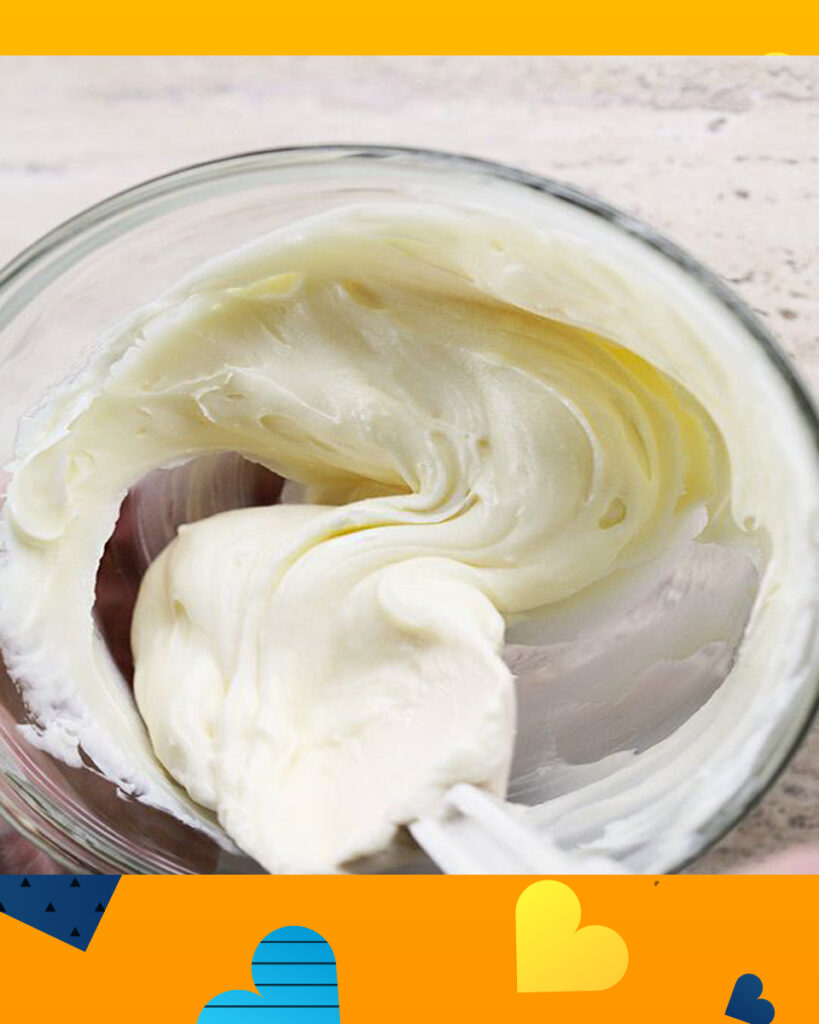
Tips to make perfect Cream Cheese Frosting
Creating the perfect cream cheese frosting requires attention to detail and a few key techniques. Here are some tips to help you achieve a smooth, creamy, and delicious cream cheese frosting:
- Room Temperature Ingredients: Ensure that both the cream cheese and butter are softened to room temperature before you start. This helps them blend together smoothly without forming lumps.
- Sift the Powdered Sugar: Sift the powdered sugar before adding it to the mixture. This helps prevent lumps and ensures a smooth texture.
- Start on Low Speed: When mixing the cream cheese and butter, start on low speed to avoid splattering. Gradually increase the speed as the ingredients come together.
- Don’t Overmix: Overmixing can lead to a curdled texture in cream cheese frosting. Mix just until the ingredients are combined and the frosting is smooth. Overmixing can cause the fats to separate and result in a grainy texture.
- Add Vanilla Extract Carefully: Use high-quality vanilla extract for the best flavor. Add it after the cream cheese and butter are combined to prevent the extract from causing the fats to separate.
- Use Full-Fat Cream Cheese: Full-fat cream cheese provides a smoother and creamier texture compared to low-fat versions. This contributes to the richness of the frosting.
- Gradually Add Powdered Sugar: Add the sifted powdered sugar gradually, in batches. This prevents an excessive cloud of sugar dust and ensures even mixing.
- Check Consistency: After adding all the powdered sugar, check the consistency of the frosting. If it’s too runny, add more powdered sugar; if it’s too thick, you can add a tiny amount of milk or cream to adjust it.
- Taste and Adjust: Taste the frosting and adjust the flavor if needed. A pinch of salt can help balance the sweetness, and additional vanilla extract can enhance the flavor.
- Avoid High Speed: Once the powdered sugar is added, mix on medium speed. Avoid high speeds, as they can introduce too much air and cause the frosting to become fluffy and less creamy.
- Chill if Necessary: If the frosting becomes too soft due to warm conditions, you can refrigerate it for a short while to firm it up before using.
- Frosting Consistency: For spreading, go for a slightly softer consistency. For piping, the frosting should be slightly firmer but still easy to pipe.
- Storage: Store any leftover cream cheese frosting in an airtight container in the refrigerator. Bring it to room temperature and give it a gentle stir before using it again.
Remember, practice makes perfect. Don’t be discouraged if your first attempt isn’t flawless. With these tips and a bit of patience, you’ll be able to create a creamy and delectable cream cheese frosting that beautifully enhances your baked creations.
How to serve
Cream cheese frosting is incredibly versatile and can be used to enhance a wide variety of desserts. Here are some delightful ways to serve and enjoy cream cheese frosting:
- Cakes: Spread cream cheese frosting over cakes for a delicious and visually appealing finish. It pairs particularly well with carrot cake, red velvet cake, banana cake, and spice cakes.
- Cupcakes: Pipe or spread cream cheese frosting onto cupcakes for a classic and irresistible topping. The tangy sweetness of the frosting complements the moistness of the cupcakes.
- Cookies: Sandwich two cookies together with a layer of cream cheese frosting for a delectable cookie sandwich treat.
- Brownies: Swirl cream cheese frosting over brownies to add a tangy contrast to the rich chocolate flavor.
- Cinnamon Rolls: Smear cream cheese frosting over warm cinnamon rolls for a decadent and delightful breakfast or brunch treat.
- Muffins: Dollop cream cheese frosting onto muffins, especially those with flavors like pumpkin or blueberry, for an extra layer of indulgence.
- Dips: Serve cream cheese frosting as a dip alongside fruit platters. It’s an excellent accompaniment for strawberries, apple slices, and more.
- Fruit Tarts: Spread cream cheese frosting over pre-baked tart shells and top with fresh fruit for an elegant and delightful dessert.
- Donuts: Drizzle or dip donuts into cream cheese frosting for a unique twist on traditional glazed donuts.
- Layered Desserts: Use cream cheese frosting as a layer in trifles, parfaits, or layered desserts to add both flavor and creaminess.
- Pancakes or Waffles: Spread a thin layer of cream cheese frosting over pancakes or waffles instead of traditional syrup for a richer and tangy topping.
- Dessert Bars: Top dessert bars, like cheesecake bars or lemon bars, with a generous layer of cream cheese frosting for an extra touch of sweetness.
- Decorative Piping: Decorate desserts with intricate piped designs using cream cheese frosting. It’s a great way to showcase your creativity.
- Fillings: Use cream cheese frosting as a filling for pastries, such as éclairs or cream puffs, to add an extra layer of flavor and creaminess.
- Cannoli: Fill cannoli shells with cream cheese frosting for a twist on the traditional ricotta filling.
Remember to consider the flavor of the dessert you’re pairing with the cream cheese frosting, as well as the texture and sweetness. Cream cheese frosting adds a tangy, creamy element that can elevate a wide range of treats, so don’t hesitate to experiment and explore different serving options!
How to store
Proper storage is essential to maintain the freshness and quality of cream cheese frosting. Since cream cheese is a perishable ingredient, it’s important to follow these guidelines to ensure your frosting stays safe and delicious:
- Refrigeration: Cream cheese frosting should always be stored in the refrigerator, as both cream cheese and butter are dairy products that can spoil at room temperature. Even if your cake or dessert is frosted with cream cheese frosting, store it in the fridge.
- Airtight Container: Transfer the cream cheese frosting to an airtight container before refrigerating. This helps prevent the frosting from absorbing any odors from other foods in the fridge and keeps it from drying out.
- Avoid Direct Air Exposure: If you’re covering a cake or dessert with cream cheese frosting, make sure the frosting is protected from direct air exposure. You can use a cake dome, plastic wrap, or a cake carrier with a secure lid to keep the frosting fresh.
- Seal the Container Well: Make sure the container is tightly sealed to prevent air from getting in, which can cause the frosting to dry out and form a crust.
- Label and Date: If you’re not using the frosting immediately, label the container with the date it was made. Cream cheese frosting can usually be stored in the refrigerator for about 3 to 5 days.
- Stir Before Using: If you find that the frosting has separated or become a bit stiff after refrigeration, give it a gentle stir or mix to restore its smooth consistency before using.
- Avoid Freezing: While cream cheese frosting can technically be frozen, freezing can alter the texture and cause separation when thawed. If you do freeze it, do so in an airtight container and thaw it slowly in the refrigerator before re-whipping it to restore the texture.
- Room Temperature Before Use: If you’ve refrigerated the frosting, let it come to room temperature before using. Cold frosting can be difficult to spread and may not have the best flavor.
- Keep Away from Heat: Avoid placing the container of frosting near sources of heat, such as a stove or oven. Elevated temperatures can cause the frosting to soften and melt.
- Check for Freshness: Always inspect the frosting before using it, especially if it’s been stored for a few days. If you notice any unusual smell, mold, or an off texture, it’s best to discard it.
By following these storage tips, you can enjoy the creamy and tangy goodness of your cream cheese frosting while ensuring its safety and quality.
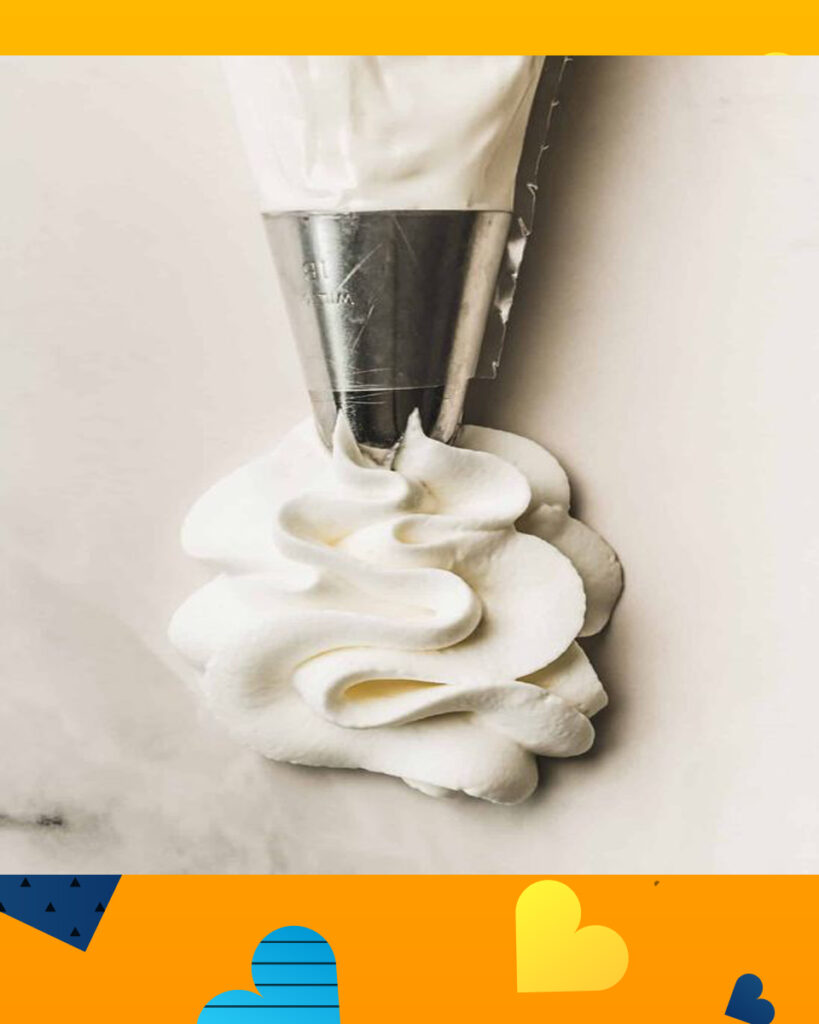
FAQ’s
- Can I use low-fat cream cheese for the frosting? Yes, you can use low-fat cream cheese, but keep in mind that it might affect the texture and flavor of the frosting. Full-fat cream cheese generally provides a smoother and richer consistency.
- How should I store desserts with cream cheese frosting? Desserts with cream cheese frosting should be stored in the refrigerator due to the perishable nature of cream cheese. Make sure to cover the dessert well to prevent it from drying out or absorbing odors from the fridge.
- Can I freeze cream cheese frosting? While it’s possible to freeze cream cheese frosting, it can alter the texture upon thawing. After thawing, the frosting may become slightly grainy or separated. It’s best to re-whip the frosting to restore its smoothness before using it.
- Why is my cream cheese frosting lumpy? Lumpy cream cheese frosting might occur if the cream cheese isn’t softened enough before mixing or if the frosting is over-mixed. To avoid this, ensure your cream cheese is at room temperature and mix gently until smooth.
- How can I achieve a stiffer consistency for decorating? If you need a firmer frosting for piping or decorating, you can gradually add more powdered sugar to thicken the consistency. Be careful not to add too much, as it can make the frosting overly sweet.
- My cream cheese frosting is too runny. What can I do? If your frosting is too runny, you can try refrigerating it for a short while to allow it to firm up. Alternatively, you can add more powdered sugar, a tablespoon at a time, until the desired consistency is reached.
- Can I add flavorings or colors to cream cheese frosting? Yes, you can enhance cream cheese frosting with various flavorings like vanilla extract, citrus zest, or cocoa powder. When adding liquid flavorings or colors, do so in small amounts to avoid thinning the frosting too much.
- Can I use cream cheese frosting in a warm environment? Cream cheese frosting is sensitive to heat and can soften or melt in warm conditions. If using it in a warm environment, try to keep the dessert chilled until serving and minimize exposure to direct sunlight or heat sources.
Troubleshooting Cream Cheese Frosting:
- My cream cheese frosting is too sweet. How can I fix it? To balance out excessive sweetness, you can add a small amount of lemon juice or a pinch of salt. These ingredients can help counteract the sweetness without significantly altering the texture.
- Why is my cream cheese frosting curdled? Over-mixing or using cream cheese that’s too cold can cause the frosting to curdle. To fix this, gently warm the mixture (without melting it) and then mix it again. If it doesn’t come together, try adding a small amount of fresh, softened cream cheese and gently combining.
- My cream cheese frosting has an off smell. What happened? Cream cheese can absorb odors from the fridge, resulting in an unusual smell. Always store cream cheese in an airtight container, and if the frosting has an off smell, consider making a fresh batch with properly stored ingredients.
- Can I use salted butter in cream cheese frosting? It’s recommended to use unsalted butter in cream cheese frosting. This gives you better control over the saltiness of the final product. If you only have salted butter, reduce the amount of added salt accordingly.
- Why is my cream cheese frosting too dense or heavy? Overbeating the frosting can cause it to become dense. To avoid this, mix the ingredients just until smooth and creamy. Overmixing can lead to incorporating too much air, resulting in a heavy texture.
Happy baking!

